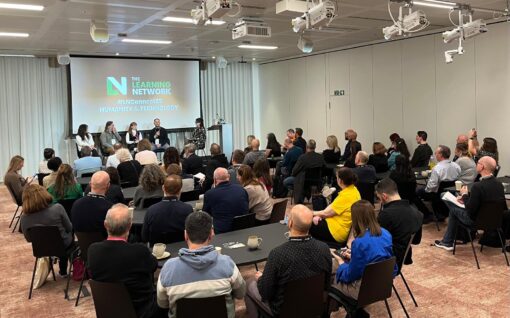Making the shift from data to insights

We drown in data, but starve for insight. That’s a pretty strong statement, made by Sean Bengry in his recent post 10 Things I’ve Learned from My 20 Years in Learning and Development. This post was one of the links included in last week’s newsletter – I said I was going to return to it, so here’s the follow-up!
Drowning in data, starved of insight. Bengry is right – the L&D sector is completely awash with data and is constantly criticised (too strong a word? I don’t think so) for not doing much with the data it collects, other than sitting on it. The other criticism is of course that L&D collects the wrong sort of data in the first place – x bums on seats, x number of training hours, x number of courses….Data, yes. Insights, no.
Instead of vanity metrics, L&D needs to know whether learning is working – are people doing things differently as a result of a learning intervention? Is there behaviour change? Is the problem that needed solving being solved? And so on.
It’s not just L&D that is drowning in data. Pretty much every profession suffers from data overload. We are all confronted with data, all the time, at work and in our personal lives. But some professions have been much quicker and better at collecting (the right) data, analysing it, creating actionable insights and then acting on them. Sales and marketing, for example. Also finance, though perhaps it’s not surprising that finance has been good at getting the most out of data.
The real puzzle we’re all trying to solve isn’t just collecting this data – it’s about weaving it together, cleaning up the mess, and then digging deep to unearth the golden nuggets of wisdom that can guide our next moves. It’s about transforming raw numbers into a story that will inform smarter, more strategic decisions. Says Bengry in his post.
Bengry separated data from insights with that title We drown in data, but starve for insight. Not everybody makes this distinction. People often use the terms data and insights interchangeably, sometimes throwing analytics into the mix as well. The three terms are linked but they are not the same thing. Data is information – it’s the raw material that’s collected. Analytics is the organisation and interpretation of data. And insights are the actionable knowledge that comes out on the other side. So it’s data+analytics=insights.
You probably knew all that already, but I couldn’t help explaining, just in case…It’s the journalist in me – never assume knowledge.
I spend a lot of my week looking at data and turning it into insights. That data might be numbers, but more often than not it’s a conversation I’ve had with someone, an interview or a report I’ve read. The insights bit is what I do with my data. If I just regurgitate what was said onto the page, the outcome would be unwieldy, tedious and pointless. Any insights would be buried (ie.lost) and my audience would switch off and away. Even the best interviewees don’t make for great copy when re-produced verbatim.
A big chunk of our work at Insights Media involves us identifying insights for clients – market insights, customer insights and/or employee insights. It could be for internal use – what do our customers really think of us and our product/service? What’s working? What’s not working? Where is the innovation, the room for improvement? Or it could be for external use – insights that drive thought leadership content or for slide decks, for example.
This may sound far removed from identifying and producing insights as a journalist, but it’s actually not. Many of the skills are transferable – understanding an audience, knowing their pain points, knowing the market and where it’s heading, a nose for a story, interviewing, active listening, critical thinking, being prepared to be surprised, being prepared to challenge…
Whether I’m producing thought leadership content for a client or talking to employees about what it’s like to work in their organisation, I use many of the same skills. I do my homework – to get good data I have to have a clear (but not prescriptive) idea of what I’m looking for and why. What’s the story being told? Why is this person telling it? What do I and my audience need to know and why? My job is to get the right data before I even start writing. This means knowing why I am talking to a person and the questions I want to ask them. But, at the same time, I keep an open mindset. People say things you don’t expect, they have experiences and opinions that are unique to them and this might add another layer to a story or change the course of the story altogether.
I won’t go on about the process – I think you get the idea.
We’ve been doing a lot of brainstorming about insights recently, as we put the finishing touches to our business model. It’s called Our insights-led model and it shows how we work and how our different areas of expertise come together. We will be ready to share it with the L&D community very soon. Only a matter of weeks now!
Here are some related articles on the importance of business insights:
– Why Customer Insights Are Critical For A Business To Thrive
– Customer Insights
– The Rise of the Data-Driven Enterprise
(I had never heard of an exabyte before – it’s a very large unit of digital data, apparently)
Picture credit: João Jesus

